History Of Cotton
Today we'll take a quick dive into the very interesting history of cotton.
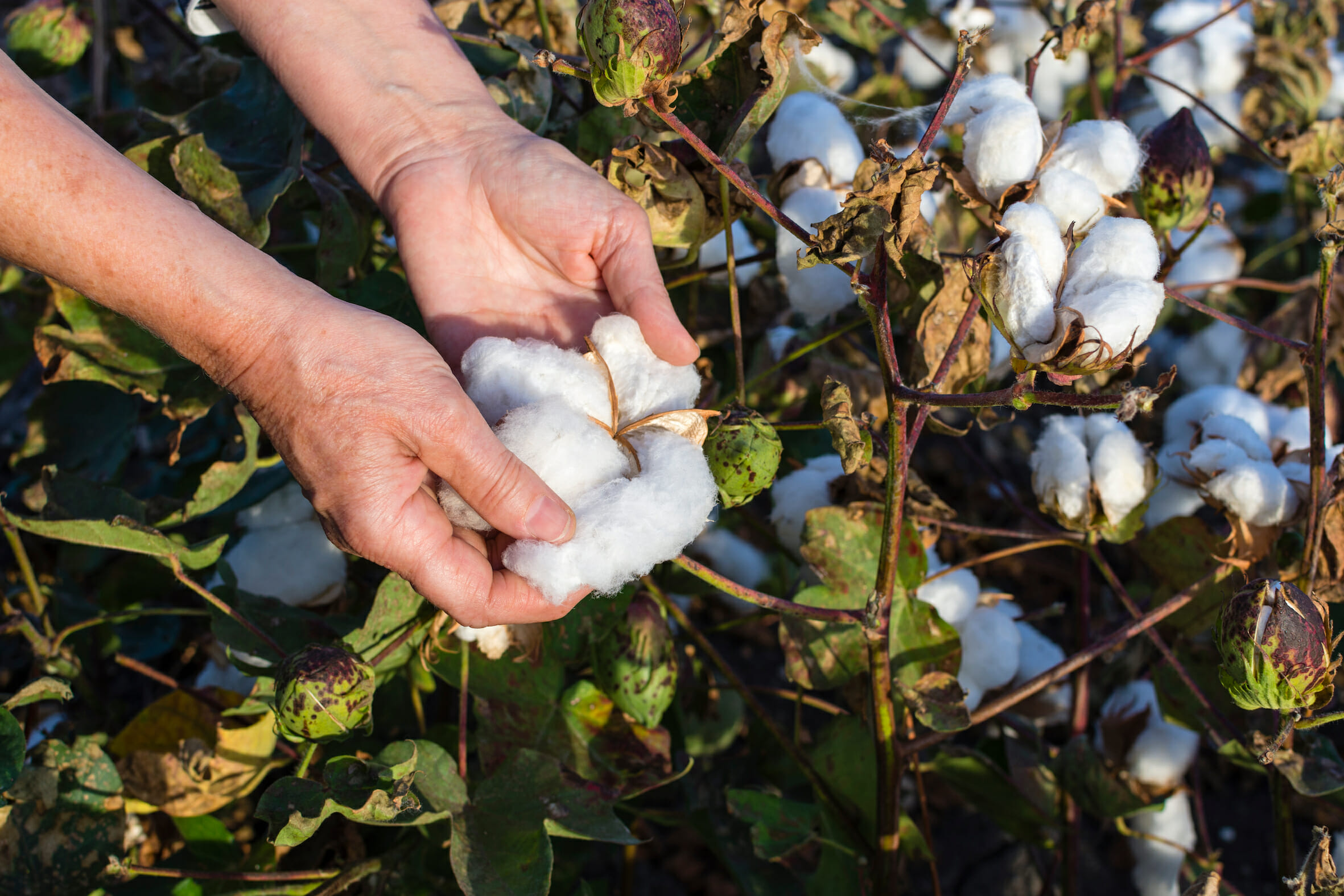
Humanity's history with cotton is extremely old, some of the oldest estimates go back as far as 7,000 years ago!
But to the European civilizations, the widespread use of cotton is relatively new. The plant is native to tropical and subtropical regions and can't tolerate a freezing winter. This forced the use of wool, linen or hemp instead.
In Africa, East Asia, and particularly India (and Pakistan) cotton has been widely grown and used since at least 1500 BC (and perhaps as old as 4000 BC). Interestingly cotton fabrics and evidence of domestication have been discovered all the way in Mexico dating to a similar time around 5000 to 3000 BC.
According to the Columbia Encyclopedia:
“Cotton has been spun, woven, and dyed since prehistoric times. It clothed the people of ancient India, Egypt, and China. Hundreds of years before the Christian era, cotton textiles were woven in India with matchless skill, and their use spread to the Mediterranean countries.”
However, the West was aware of the material through trade. Ancient and medieval peoples have exchanged many valuable goods for it. The ancient Greek historian Herodotus mentions cotton in the 5th century BC, saying “a wool exceeding in beauty and goodness that of sheep.”
The Egyptians were known to grow and spin cotton from around 650 BC. Egypt continued to supply Europe with cotton as a province of the Roman empire, then through trade into medieval times. Between Egypt and the Indian Mughal Empire, the upper classes of Europe received a steady stream of cotton all the way to the renaissance.
The Medieval Period
In the late medieval period imported cotton became well known to Northern Europe, funnily, without any knowledge of how it was grown (other than that is was a plant). People in the region, noting cotton's similarities to wool, could only imagine that cotton must be produced by some sort of plant-borne sheep.
A quote from John Mandeville, a supposed traveler:
“There grew there [India] a wonderful tree which bore tiny lambs on the endes of its branches. These branches were so pliable that they bent down to allow the lambs to feed when they are hungrie [sic].”
Below is the humorous depiction of the imagined plant as imagined by the author:
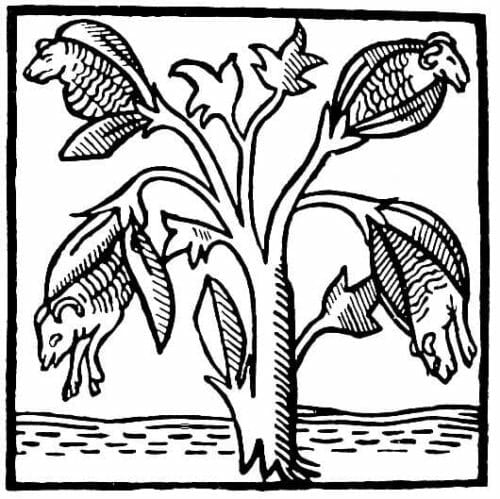

By the 1500s cotton was widely farmed (at large scale) throughout the warmer regions of Asia and the Americas. They would go on to supply the rest of the world during the massive changes of the industrial revolution.
Recent History
Cotton production and particularly processing changed greatly during the industrial revolution. Mechanization made the processing far cheaper and available for public consumption, and the efforts of the British Empire restructured much of the cotton-producing efforts in the colonies.
The modern history of cotton is inseparable with the British Empire, they, with the British East India Company, were critical in bringing high quantities of cotton from the colonies to the textile mills of Europe.
The South United States, using slave labor from Africa, and India exported the lion's share of raw, unprocessed cotton. Export was greatly ‘encouraged' over local processing by the Empire. This was mostly done through tariffs against native manufacturers. This both eliminated local competition for the textile industry and increased trade to British merchant fleets.
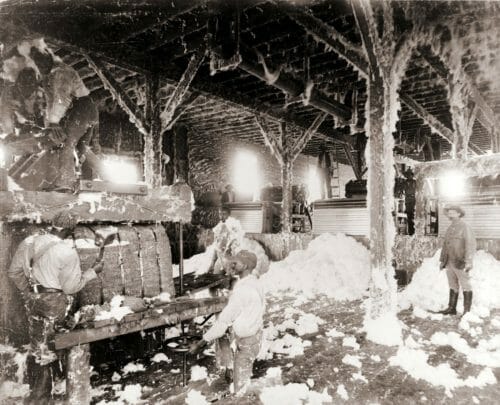

During the American civil war, Egypt became a new global hub of cotton growing, to make up for the lack of access to the cotton of the Confederate South. When the war ended, demand returned to the US, sending Egypt into bankruptcy (this was a major factor in the future British invasion of Egypt).
Cotton production further developed in the American south. After emancipation, sharecropping evolved, where landless white and black farmers worked land owned by others for a share of the profits. Hand-picking of cotton endured well into WWII when finally machines gentle enough to pick the delicate balls without shredding the fibers were developed.
In many developing countries hand-picking of cotton is still common, but mechanization is the standard in the majority of producers.
Modern Times
Like all farming, cotton farming has changed along with the development of new and better tractors, fertilizers, pesticides, and herbicides. It remains today one of the most demanding crops to farm. Cotton is very weak to pest damage in particular and requires the largest amount of pesticide use compared to any other crop.
In the modern-day, the newest development in cotton-growing has been genetic modification. As of 2011, up to 70% of the total area planted of cotton was with GM seeds.
Genetic modification has been done to either provide resistance to RoundUp (a broad-spectrum herbicide made by Monsanto, now Bayer) and/or to grant resistance to some of the most destructive pests that plague cotton growers. Unfortunately even GMO cotton still needs large applications of pesticides.
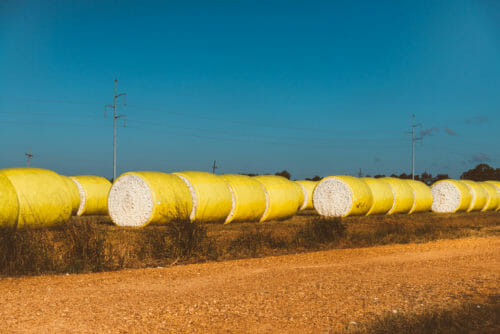

A very small number of farmers are moving toward an organic system of production. Organic cotton is often used in baby clothes and diapers, to limit exposure to chemicals and allergens.
Uses, More Than Just Fashion
In the world of fashion, the use of cotton has followed the development of technology and availability. Before the invention of the cotton gin, it took over 600 hours of human labor to produce one bale of cotton (which is about 500 pounds). This, of course, made cotton garments far too expensive and out of reach of the average person.
We can see cotton in the wealthy classes of Europe, though not quite as desired as silk, nor as warm as wool. Soft undergarments, undershirts, and light summer dresses were common uses. Like most things imported then, cotton was most commonly used as a display of wealth and prestige.
In nations with native-grown cotton, like India, cotton was worn up and down the social ranks.


After the industrial revolution cotton became an affordable choice for the average person. As the price continued to drop more and more people across the world began to use it.
In the warmer climates of the Americas and Asia, western made cotton garments were a common export. Today cotton is the most popular natural fiber in the world, its lightness, inexpensiveness, and diversity of use make it available everywhere.
Cotton is used for an astounding number of textile products, it is the most used natural fiber for a reason. These uses include: denim for bluejeans, terrycloth for bath towels, cambric which is popularly used for blue work shirts (which is where we get the term ‘blue-collar'); most of your socks, underwear, bedsheets, and T-shirts are made of cotton.
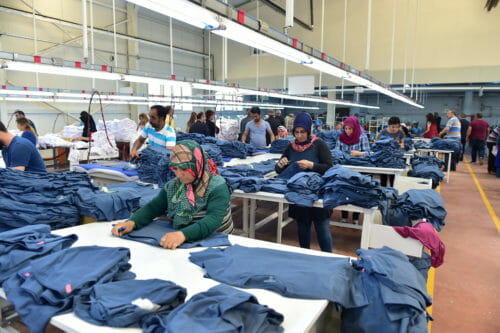

Cotton is of course used in a variety of other places outside the textile industry, including coffee filters, fishing nets, tents, cotton paper, medical cotton balls, to name a few. The seed which is extracted from the fiber is used to create cottonseed oil which is used for cooking. The seed hulls can be fed to livestock to supplement their feed.
Who Makes It Today?
Some places have become well known for their high-quality cotton. Egyptian cotton is well known around the world for its high quality. Many luxury garments will boast at having Egyptian cotton. Similarly, Pima cotton, grown in the American Southwest, is highly regarded for quality and features on many luxury labels.
Be careful, the names “Egyptian Cotton” and “Pima Cotton” have become more like labels now to show a certain level of fineness. Most so-called Egyptian or Pima cotton is not in fact from those areas.
The five leading exporters of cotton are 1) the United States, 2) India, 3) Brazil, 4) Australia, and 5) Uzbekistan. China is the leading total producer but consumes the majority of its production (a staggering 6,532,000 metric tonnes in 2014!).
The Future Of Cotton
Cotton will continue to be an enormously important textile. Fashion, of course, will continue to develop new ways of looking great in it.
Genetic modification will perhaps open more doors to less harmful methods of farming cotton. Similarly, the organic movement continues to make great progress every year.
What do you think? How will we find new ways of using this wonderful material? I hope you enjoyed this quick trip down the history of cotton. See you next time, Until Then, Happy Sewing!








The article mentions ‘cambric’ as the fabric used for workshirts. The correct name is ‘chambray,’ a fabric woven with white warp threads and blue wefts. Cambric is a filmy BLACK fabric use for finishing the undersides of upholstered furniture.
Hi Mary, thanks for your feedback on this. Cambric and chambray are essentially the same things. I think the word chambray is more popular in the US and cambric in Europe and elsewhere. Please have a read of the link below for more info.
https://en.wikipedia.org/wiki/Cambric
interesting article thanks
I loved your article on cotton.
Thank you, Joyce, my son wrote it. In fact, he is the one who writes all the history articles. I will pass your appreciation to him, Kind Regards,
I’ve just read your article about the history of cotton and found ii fascinating. I knew the bare bones but not the ancient history and in a brief report like this you can’t go into much detail of either the good or the terribly bad part of it.
We use cotton all the time but never really think of the depth of its history. You have inspired me to find out more. Many many thanks
[…] learn more about the History of Cotton, please see this […]
[…] spoke of the “beautiful printed cottons” in India. We’ve discussed before the important history of cotton, and in the history of dyeing fabric, it is one of the most important […]
I just read a book called American Cotton by Teresa Dury Wong and it was very informative and a easy read. It dealt with cotton and the textile industry over the years. She is from Houston and her pictures were wonderful. Her recent book is about the two woman who started the Houston Quilt show, its on my list.
Thanks for the suggestion Kim, I shall take a look.
Thanks for the interesting article. Unfortunately, the price of cotton soared in recent years due to crop failures related to changing weather patterns. Because of the price a farmer could then get for a cotton crop, many in my area switched from growing sunflowers (for oil) to fields of cotton. So many farmers did around the world that the price of cotton dropped again, and it became more expensive to harvest that they could get for their crop. Around here, this year’s yield it has been left to rot in the fields. It’s painful to see such waste, but I can understand the economic reality.
I hate that it is getting much harder to find reasonably priced all-cotton athletic socks and all cotton clothes. I’m sure it’s far cheaper for mills and manufacturers to include nylon and polyester, but I refuse to buy the blended fabrics since they don’t breathe as well in southern heat.
Thank you for a very interesting article, and well researched.
Very well written. Only one small detail needs correction: The fabric that was used for work shirts is CHAMBRAY. Cambric is a black, gauzy type of fabric than was commonly used to cover the bottom of older upholstered furniture pieces. Too fragile to be reused, it is usually replaced by a cheaper non-woven petroleum product when a piece is reupholstered. During the 10 years I worked doing custom upholstery, I came to appreciate the craftsmanship of some of the furniture that was so well constructed.
Thank you for the historical article. Fascinating facts I never knew, learned only what was taught in history classes many years ago. But focused mostly on black slavery and not all the others who were also used and hardships. I knew that cotton was a hard crop to maintain & harvest & appreciate being able to wear it.
I actually have 2 small plants growing just for fun. Want to use for decorations when the white tuffs appear.
Hello I make sustainable clothing and I only use natural fibres. I’m not sure why anyone would dress themselves in petrochemicals ( just my opinion)
Love the article I’ve been wondering for a long time. Why do I see spandex everywhere? I love cotton. Why is everyone using this awful spandex?
This article was fascinating. Putting details I didn’t know in such detail pulls my use of cotton to a new appreciation. Thank you for the history and global use information. I am reminded of how the world is connected and our community decisions do matter in far reaching ways.
Indeed it does, thank you for taking the time to read it.
Very well written! Thank you for a most interesting and informative article
Thank you I will pass your message to my son.
Great history lesson on cotton. However your take on the future of gm cotton is all wrong. ANY pesticides especially when poured on the plant days before harvest to kill it will be on your skin and in your body. Studies and courts have proven that pesticides especially glyphosate and neonicinoids are causing cancer and other diseases. We need to promote organic cotton and sustainability especially in a crop that is so expensive to grow
Great article. It’s informative and thought provoking.
Interesting information. Just an fyi, Roundup is an herbicide NOT a pesticide.
An herbicide IS a type of pesticide. If you are typing to grow a crop, weeds are indeed pests!
Even though I live in the Deep South surrounded by cotton fields I was unaware of this history. Thanks.
Very interesting article. Kudos to your son! I hope he’s working on more articles like this one, and look forward to reading them..
Hi Kriss, here is another article this time on linen. https://so-sew-easy.com/history-of-linen/
Thank you. I enjoy reading your informative articles and found this one particularly interesting.
You are welcome Val, this was written by my son who is in Australia at the moment, So appreciate you taking the time! Kind Regards,
Thank-you for the information, most of which I was unaware of.
I have a new writer on board with a knack for history!
I found this history of cotton to very informative. I learned so much from this article. Things that I never knew about. I will save this article for future reference.
Thank you Joan, the history of cotton is indeed fascinating.
Very interesting.
Very happy you took the time to read it, Kind Regards,